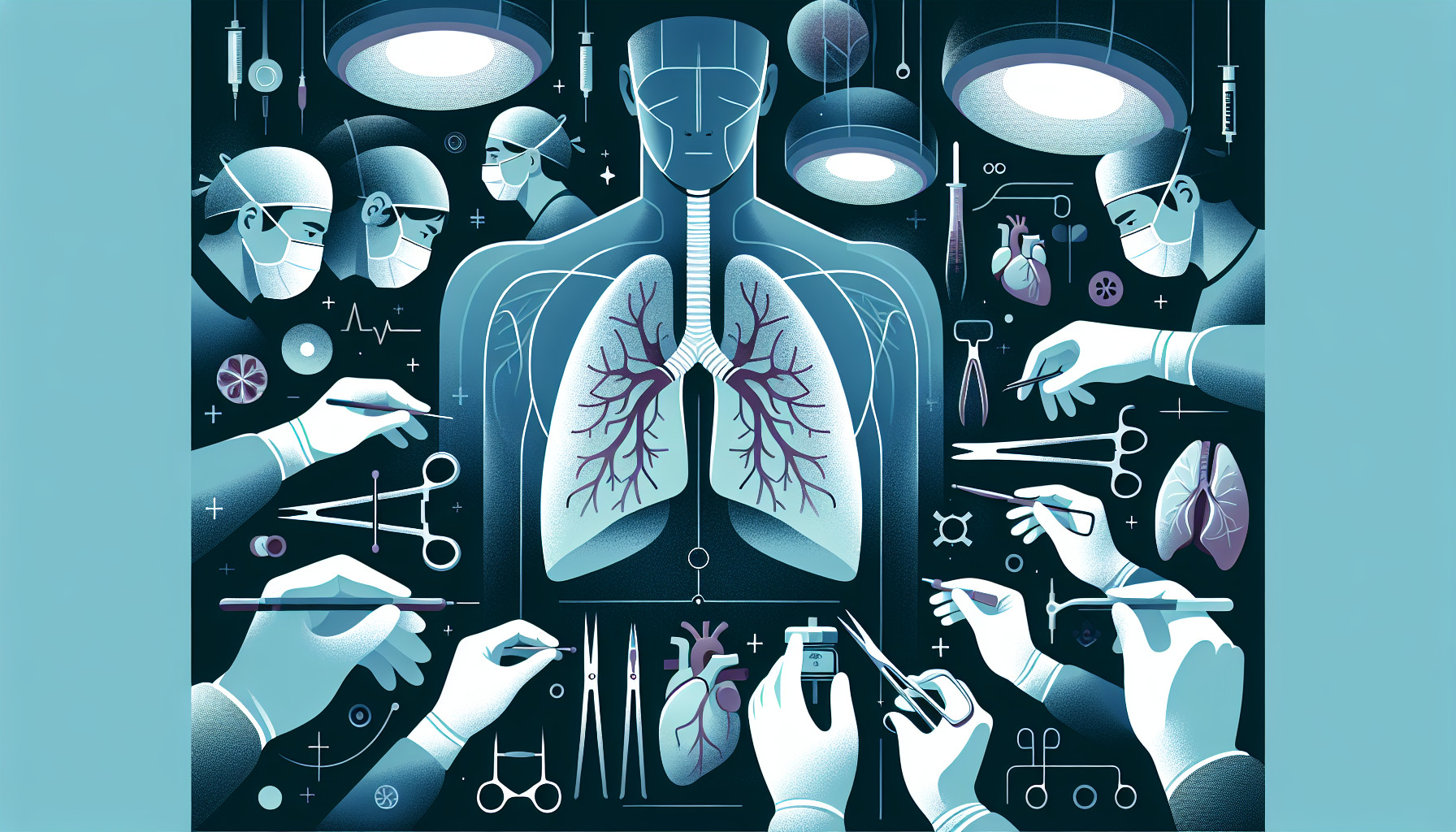Our Summary
This research paper discusses the progress and challenges in lung transplants. It notes that while the number of transplants and survival rates are increasing over time, there are many complications that can occur in the chest area (thoracic) and other parts of the body (extrathoracic) after the surgery. The article specifically focuses on the most common non-infectious complications. These complications are often due to the long-term use of drugs that suppress the immune system, which are necessary to prevent the body from rejecting the new lung. These drugs, while crucial, can lead to other health problems.
FAQs
- What is the trend in lung transplant volume and survival rates over time according to the Scientific Registry of Transplant Recipients?
- What are some common noninfectious complications that lung transplant patients may experience due to prolonged exposure to chronic immunosuppressive agents?
- What are the challenges to the outcomes of lung transplantation?
Doctor’s Tip
One helpful tip a doctor might give a patient about lung transplant is to follow a strict medication regimen to prevent rejection and minimize the risk of infection. It is important to take all prescribed medications as directed and attend all follow-up appointments with your healthcare team. Additionally, maintaining a healthy lifestyle, including regular exercise and a balanced diet, can help improve overall outcomes after lung transplant surgery.
Suitable For
Patients who are typically recommended for lung transplant are those with end-stage lung disease, such as chronic obstructive pulmonary disease (COPD), idiopathic pulmonary fibrosis, cystic fibrosis, pulmonary hypertension, or bronchiectasis. These patients may have severe symptoms, such as difficulty breathing, fatigue, and frequent respiratory infections, despite optimal medical management. Lung transplant may be considered when other treatments, such as medications or oxygen therapy, are no longer effective in improving quality of life and prognosis. Additionally, patients must meet certain criteria, such as being medically stable enough to undergo surgery and comply with post-transplant care, to be eligible for lung transplant.
Timeline
Before lung transplant:
- Patient is diagnosed with end-stage lung disease and is evaluated for lung transplant candidacy.
- Patient undergoes extensive medical and psychological evaluation to determine eligibility for transplant.
- Patient is placed on the lung transplant waitlist and waits for a suitable donor match.
- Patient may experience worsening symptoms of lung disease and declining health while waiting for transplant.
- Patient receives notification of a suitable donor match and undergoes lung transplant surgery.
After lung transplant:
- Patient undergoes post-transplant care and monitoring in the hospital for a period of time.
- Patient is discharged from the hospital and continues to receive follow-up care from a transplant team.
- Patient must take immunosuppressive medications to prevent rejection of the new lung.
- Patient may experience complications such as infections, rejection episodes, and side effects of immunosuppressive medications.
- Patient undergoes regular lung function tests and monitoring to assess the function of the transplanted lung.
- Patient may experience improvements in symptoms and quality of life post-transplant.
- Patient continues long-term follow-up care to monitor for complications and ensure the success of the transplant.
What to Ask Your Doctor
- What is the success rate of lung transplants at this facility?
- What are the potential risks and complications associated with a lung transplant?
- How long is the recovery process, and what can I expect during the rehabilitation period?
- What are the long-term effects of immunosuppressive medications that I will need to take?
- How often will I need to follow up with my transplant team after the surgery?
- Are there any lifestyle changes or restrictions I will need to follow post-transplant?
- What support services are available for lung transplant recipients, such as counseling or support groups?
- How will my quality of life be impacted after a lung transplant?
- What is the average lifespan of a lung transplant recipient?
- What are the signs and symptoms of rejection or other complications that I should watch for after the transplant?
Reference
Authors: Grewal HS, Thaniyavarn T, Arcasoy SM, Goldberg HJ. Journal: Clin Chest Med. 2023 Mar;44(1):179-190. doi: 10.1016/j.ccm.2022.11.001. PMID: 36774163
